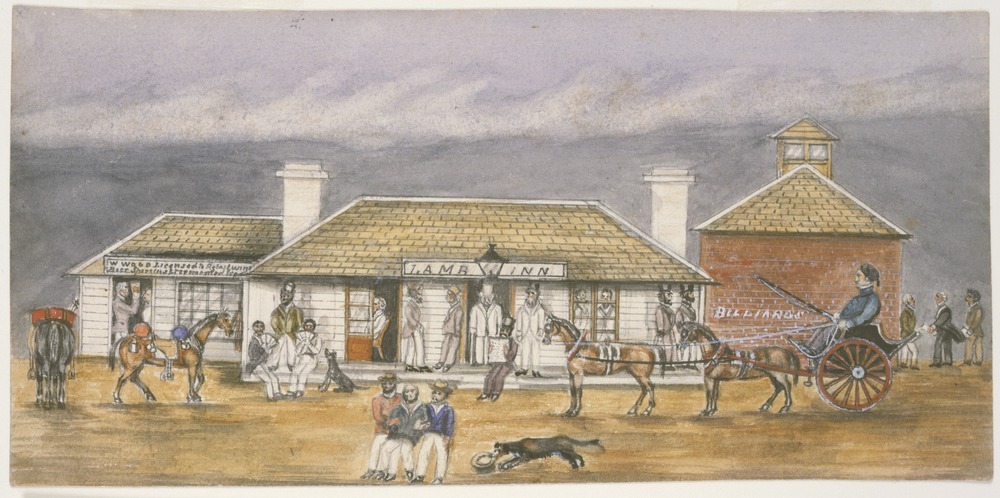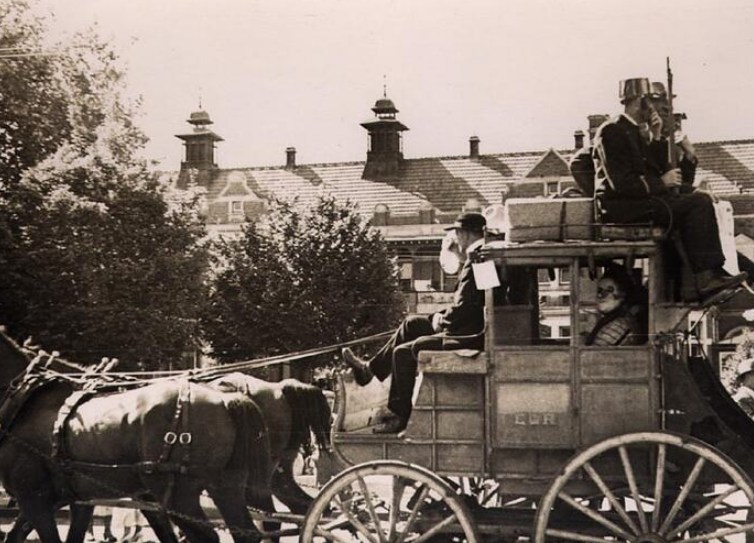John Conway Bourke
!['A late Cross Country Mail, [1840-1872] / Samuel Thomas Gill.' State Library NSW](https://walerdatabase.online/wp-content/uploads/2024/05/A-Late-Cross-Country-Mail.jpg)
Waler Data Base @ Facebook. Image: ‘A late Cross Country Mail, [1840-1872] / Samuel Thomas Gill.’ State Library NSW

Image: John Conway Bourke, Monuments Australia
John Conway Bourke, Australia’s first mailman between Melbourne and Sydney. Born in County Limerick, Ireland in 1815 he came here in 1836 and began work as a stockman for Joseph Hawdon of Howlong Station. Hawdon also took up Dandenong Station where John became manager. They ran cattle.
John wrote of these times, which included disputes of boundaries; he also met influential men of the era and several explorers and had good correspondence all his life. His letters still exist. He realised the value of camels for many areas and of course, of good tough horses on which his life and the mail depended.
In 1936 with John Gardiner and John Hepburn he overlanded a mob of cattle from Howlong station on the NSW-Vic border, to Port Phillip for Hawdon. No tracks or roads for the route then. In 1839 he overlanded with Hawdon and Lieutenant Munday from Melbourne to Adelaide.
Hawdon was impressed with John’s abilities in the bush and asked the Governor for a mail contract, getting the first Melbourne to Sydney contract – via Yass – for a lucrative 1,200 pounds a year. He made John the “post boy” – the one who did the actual work, Melbourne to Yass. The mail for Sydney was collected from Yass by coach. John had two weeks to make the journey. No track, no road.
John helped many along the way, both when a stockman and a mailman – in 1837 he rescued two drovers who were drowning in the river on Howlong. They’d swum a horse across with a towline, then tried to pull a wagon across but it turned over in the river pulled two of the men in, and was swept away. John swam to their rescue. He was successful. They refused to re-enter the water, so again John swam across with more towropes, and arranged the saving of the wagon. Many such adventures in his journals.
The mailman is eagerly awaited by many these days, and in those times when there was no other communication their arrival was very welcome indeed. Until he went through, many places got no mail.
On New Year’s Day 1838, John left Melbourne to take the very first mail overland to Yass for Sydney. He was 23 years old. He had no compass. A big crowd saw him off. He had 15 pounds – 6.8 kilos – of mail in his leather saddle bags. Two old horse pistols in his belt. Bedding, spare clothing, damper, billy. There was no road, not even a track. It was hard going. He camped at night in the bush.

At one stage a large group of Aboriginal men waving weapons attacked with much yelling – they’d become hostile due to atrocities by some. John had only one choice, gallop for safety. He spurred his horse and galloped through the group, leaning low over the horse to dodge spears, but the horse was speared. John refused to stop until out of harm’s way. Then he pulled up the horse, pulled out the spear, doctored the brave animal and they continued. The horse healed eventually.
When he got near Hawdon’s place on his last trip with the mail, the Murray was up. John left his horse, on one side; he stripped and swam across then walked – but the station dogs saw him and attacked – he was only saved by climbing a tree and yelling for help. The station manager Mr Weatherill arrived with a shotgun, thinking he was a bushranger.
“I’m Her Majesty’s Mail from Melbourne!” shouted John.
“Don’t think much of your uniform!” retorted the manager, who laughed so much he had to sit down!
All John was worried about was his horse, a grey but when he swam back over the river and tried to get it through flooded boggy area, it went under a fallen tree and drowned. He walked on to Albury carrying the mail and tack but it got too much. Some cattle caught his eye. He caught a wild cow, put his bridle and saddle on it, and the mail. Soon he was riding the cow – it took him over 100 miles! He came into Albury, trotting on the cow, covered in mud and blood but smiling. He got the mail though. He got another horse there.
On another trip about 100 Aboriginal men surrounded him, despite John thinking he’d chosen a hidden spot, as dawn broke. All John could think of was a play he’d seen once called “Dance for Life.” So he crawled from his bedroll and danced and danced with all the mad capers he could think of – much entertained, once he tired, the men left him in peace, chuckling!
The war with some colonials and some Aboriginals continued however, and one warrior named Jackendebbby had it in for white men, he attacked John on sight once, and John spurred his horse and desperately galloping, made it to flooded Goulburn River, and escaped that time by swimming to safety, John again credited his horse with saving his life. Many such adventures.
An escaped convict calling himself Mr Pick-Up tried to stick him up once, he had a gun, but John had seen him coming and had his pistol at the ready. He was very determined and Mr Pick-Up went elsewhere. John said he had evil eyes.
Each trip was tough – John blazed the track that others later used. In that year alone he rode over 11,000 miles – over 17,000 k.’s – carrying mail. The track became well blazed. Amazingly, his first run was on time – within a fortnight – and so were all his trips after that, for over a year.

His efforts resulted in an uninterrupted postal service on that route from then on. He’d also kept meticulous records of the mail, valuable for the postal service. To mailmen down the years his name became legendary.
In 1841 a coach service went through. John moved on to other work for the GPO. Next he became the first licensee of the Westernport Hotel in Melbourne, 1847 – 1858. During a gold rush he moved his family to New Zealand, but after 10 years of battling they returned in 1871.
John kept journals of his trips. His papers from 1821 until his death are now with the Royal Society of Vic.
He worked at the GPO until 1883 when they gave him a small pension. John passed away at home in Melbourne in August 1902, aged 87, his mind bright to the end. There were two surviving children, Patrick of Cairns and Tilly (Mrs Thorn) of Greenwich Point, Sydney.
Image: Advocate (Melb.), 6th June, 1935
For many years after John’s death the old coach drivers made an annual pilgrimage to his grave, in respect for his blazing of the mail trail, being the first to get the mail through on those routes and establishing a regular mail service, vital to so many. Each year they made a pilgrimage to John’s grave in Melbourne. Also to coach driver Ned Devine’s grave and others.
No photo of him on a horse sorry as no cameras in those times but luckily a photo of John himself. He said he preferred a horse that was sure rather than fast.

